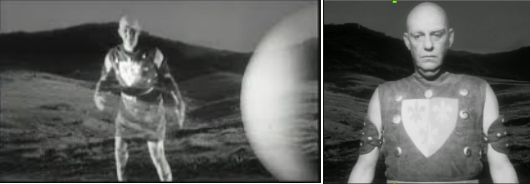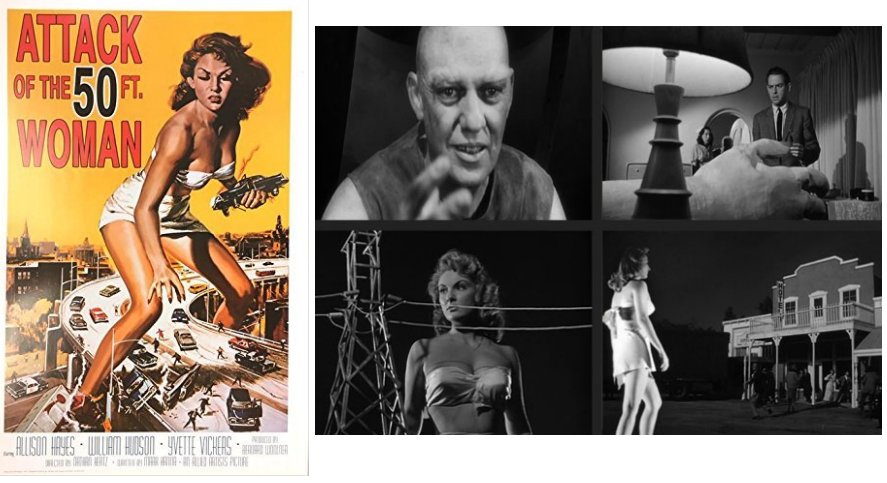In this, our sixth movie from the collection of various and sundry movie posters Bob has framed and hanging around our house, I found myself prepared for the worst. The kind of movie that I imagine going with a poster like this is not one that compels me. In retrospect, I didn’t find it that bad, which I guess is why it’s often characterized as one of those movies that’s “so bad it’s good.”
Random thoughts I had during this movie:
- At about 45 minutes into the 65-minute film: “I’m concerned that we still haven’t seen the film’s eponymous protagonist.”
- Once the giants appear: “Why are they sometimes opaque and sometimes translucent?”


- At the first glimpses of the giant woman, which only shows her right hand: “They sure are getting their money’s worth out of that huge paper mâché hand prop.”

- At the first appearance of the alien space craft: “Why are they calling it a satellite instead of a space ship or UFO?” (There is a short discussion about this in one of the FAQs on the IMDB page, if you’re interested in a possible explanation.)
In the end, the 2 things that bothered me the most were:
- In the movie, they refer to the woman as a “30-foot giant,” but the very name of the movie is “Attack of the 50-ft. Woman.”
- The poster for this movie is a scene that never even remotely appears in this movie. I mean the setting is essentially a rural one-stoplight town. The only infrastructure the 30-foot woman hovers over is the town hotel and bar shown in the bottom right quadrant of the collage picture below.

But as it turns out, there was so much more to be bothered by that I didn’t even notice. Here are some from the goofs page of the IMDB entry for this film:
- When Nancy is normal-sized, she is a brunette with a short, styled hairdo. But when she’s super-sized, she’s suddenly a blonde with long curly hair.
- Although the alien is a giant, when the sheriff and Jess go into the “satellite” (the alien spacecraft), the passageways and interiors are for human-sized inhabitants.
- Clothes are sticking out of Harry’s suitcase as he hurriedly brings it out of the bedroom. In the next shot, the suitcase appears neatly packed. (I actually noticed this one.)
- When Nancy is lying on the ground dead, one of her eyelids moves. (I sure wish I’d noticed that!)
- About 40 minutes in, Harry is filling a large (~30 CC) syringe in an attempt to kill his wife, but after he and the nurse are shocked to see she has become a giant, he is only holding a small (~ 1 CC) syringe. (And Bob pointed out that nobody wipes the needle with alcohol before they use it.)
- How Allison Hayes can be fifty feet tall and yet remain in a standard size room is never explained. (In her defense, she was lying down, so maybe the room was 60-feet long.)
- The giant picks up Nancy’s 1958 Plymouth station wagon, throws it to the ground and, mysteriously, the Plymouth station wagon turns into a 1949 Chevrolet Station Wagon. Also, when the giant alien picks up the Plymouth wagon, the scene behind it, the still frame cut from the movie ad, is moved about to simulate the car’s movement. The slow motion action reveals the 1949 Chevrolet Styleline Deluxe Woody Wagon.
In the end, I’m glad I watched this to have an idea what’s behind the poster that I see practically every day in our living room.